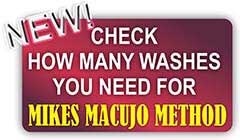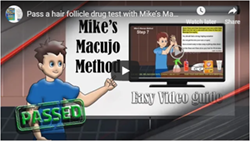Last Updated on June 3, 2025
When it comes to passing a hair follicle drug test, misinformation runs rampant online—especially regarding the ingredients that actually make a detox shampoo effective. A common myth that has circulated on forums and websites is the claim that propylene glycol is the “main” or “active” ingredient responsible for cleansing drug metabolites from hair.
Let’s be clear: this is not true.
What Is Propylene Glycol?
Propylene glycol is a synthetic, colorless, odorless liquid that belongs to the class of compounds known as alcohols. It is widely used across multiple industries—including cosmetics, pharmaceuticals, and even food—as a solvent, humectant, and carrier agent.
In detox shampoos, propylene glycol serves one primary role: it acts as a solvent to help dissolve other active ingredients so they can be distributed evenly across the hair and scalp. It does not penetrate the hair shaft or remove drug toxins on its own.
Why the “Propylene Glycol Myth” Persists
Many online sources and even some product sellers have mistakenly or misleadingly pointed to propylene glycol as the core reason detox shampoos work. This oversimplification is not only inaccurate but also misleading to consumers seeking effective solutions.
In reality, effective detox shampoos—such as the Macujo Aloe Rid Shampoo—contain a synergistic blend of compounds that go far beyond the role of a simple solvent like propylene glycol.
What Actually Works in Detox Shampoos Like Macujo Aloe Rid?
The Macujo Aloe Rid Shampoo is a prime example of a product whose effectiveness stems from multiple specialized ingredients designed to target drug metabolites trapped in the hair cortex.
Key components include:
-
EDTA (Ethylenediaminetetraacetic Acid) – A chelating agent that binds to metal ions and residues.
-
Acidic pH Formulation – Opens the hair cuticle, allowing deeper penetration of active ingredients.
-
Deep-Cleansing Surfactants – Break down oils and residue to allow other compounds to reach the inner hair shaft.
-
Proprietary Herbal and Chemical Blends – Assist in extracting deeply embedded toxins without destroying the hair strand.
Why Macujo Aloe Rid Is More Than Just a “Solvent-Based Shampoo”
While many low-cost or generic detox shampoos rely heavily on surface-level cleansers and solvents like propylene glycol, Macujo Aloe Rid stands out because of its multi-stage compatibility with detox protocols, especially the well-known Macujo Method. It is not a one-ingredient miracle; it’s a precision-engineered product formulated to work in concert with acidic agents like vinegar and astringents for deep cleansing.
FAQs: Propylene Glycol and Detox Shampoos
❓ Is propylene glycol the main detox ingredient in shampoos?
No. Propylene glycol is just a solvent that helps distribute active ingredients evenly. It does not have the ability to remove drug toxins from hair on its own.
❓ Why do some sources say propylene glycol is what removes drugs from hair?
This is a misunderstanding. Because propylene glycol is a commonly listed ingredient in both detox shampoos and some drug test tampering guides, people falsely assume it's the key player. In reality, it's a helper—not a cleanser or detox agent.
❓ Does Macujo Aloe Rid Shampoo contain propylene glycol?
Yes, it contains propylene glycol—but only as a supporting ingredient. The effectiveness of Macujo Aloe Rid lies in its complex formula, including acidic agents, chelators, and surfactants that target metabolites deeply embedded in hair.
❓ Can I use just propylene glycol or a homemade solution to detox my hair?
No. Using straight propylene glycol or DIY substitutes is not effective and may even damage your hair. Detoxing hair requires opening the cuticle, penetrating the cortex, and safely removing embedded toxins—something a single solvent cannot do.
❓ What makes Macujo Aloe Rid better than other detox shampoos?
Its multi-layered approach—combining strong yet hair-safe cleansing agents with a formulation that aligns perfectly with the Macujo Method—makes it one of the most trusted options for people facing hair drug tests.






